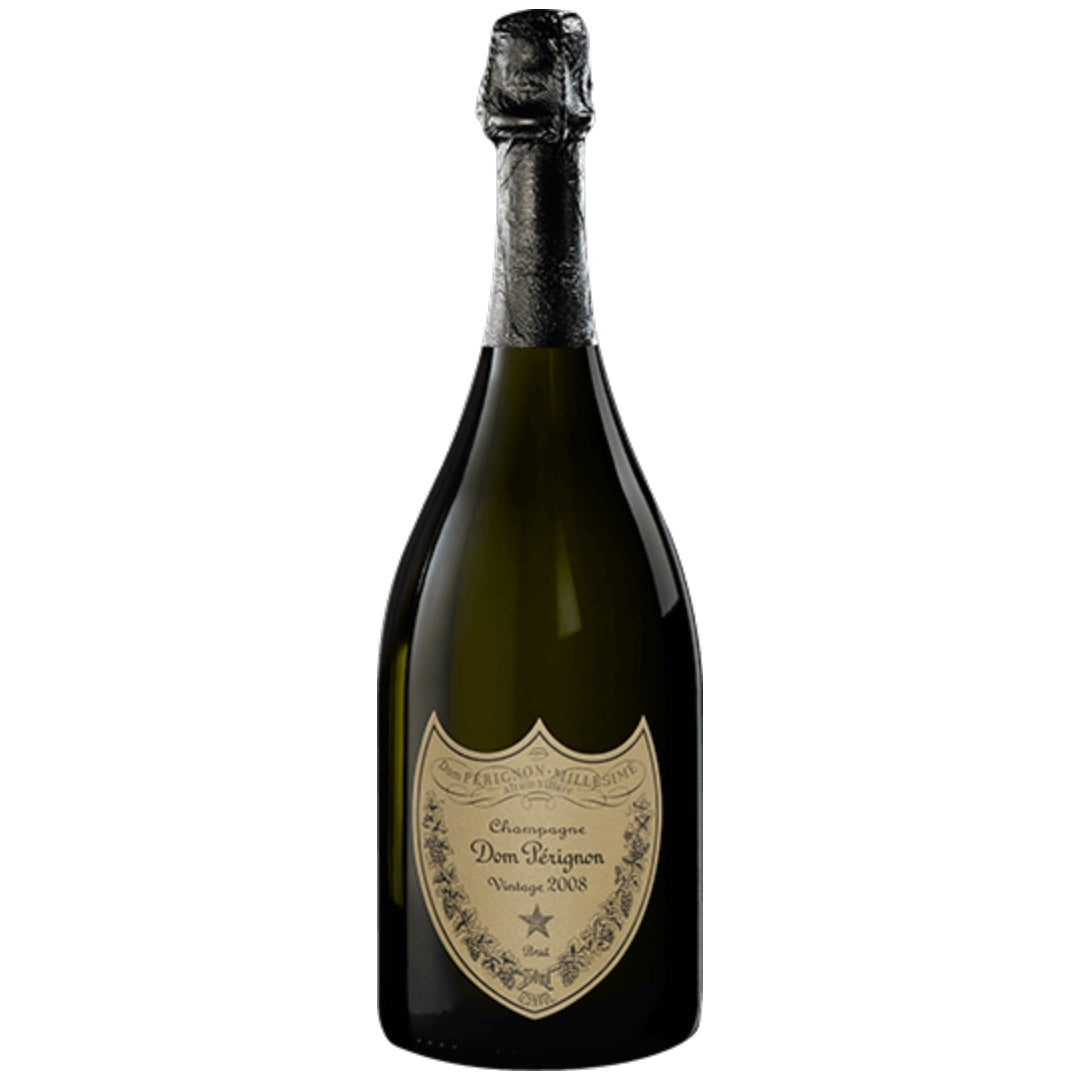Champagne Dom Pérignon 2008
Champagne Dom Pérignon 2008
Vintage:
Volume:
Country: France
Region: Champagne
Grapes:
ABV:
Scores:
Product Code:
Couldn't load pickup availability
1. Winery Background
Dom Pérignon is one of the most iconic and prestigious Champagne houses in the world, named after the Benedictine monk Dom Pierre Pérignon, who was a pioneer in the production of sparkling wine in the 17th century. Dom Pérignon is the flagship prestige cuvée of Moët & Chandon, and it is produced only in exceptional vintages, representing the pinnacle of quality and luxury in Champagne. The house focuses on making vintage Champagne, meaning all the grapes used come from a single harvest year.
2. The Producer
Moët & Chandon, founded in 1743, is one of the largest and most recognized Champagne houses globally. Dom Pérignon is their premium cuvée, representing a blend of Chardonnay and Pinot Noir from the best vineyards in Champagne. Winemaking is overseen by the chef de cave (cellar master), who ensures that each vintage embodies the signature balance, elegance, and complexity of Dom Pérignon.
3. The Vineyard
The grapes for Dom Pérignon are sourced from the finest Grand Cru vineyards in Champagne, primarily in the Montagne de Reims, Vallée de la Marne, and Côte des Blancs. The house also has access to grapes from the Hautvillers vineyard, historically tied to Dom Pérignon himself. These vineyards benefit from the region’s chalky soils and cool climate, which contribute to the wine’s structure, minerality, and aging potential.
4. The Wine
Dom Pérignon 2008 is a vintage Champagne, meaning it is made from grapes harvested exclusively in the 2008 growing season. It is a blend of Chardonnay and Pinot Noir, typically with a 50/50 or 60/40 split, though the exact proportions are not disclosed.
5. The Vintage (2008)
The 2008 vintage is regarded as one of the best in Champagne in recent decades. The year started with a cool spring and early summer, but the weather turned ideal during the late ripening period, allowing for a long growing season. This vintage is known for producing wines with incredible freshness, acidity, and precision, making it one of the most celebrated vintages for Dom Pérignon.
6. Vinification and Aging
After the grapes are hand-harvested and carefully selected, Dom Pérignon undergoes traditional vinification methods. The wine is fermented in stainless steel tanks, and the secondary fermentation takes place in the bottle to produce the natural effervescence. The wine is aged on the lees for a minimum of 8 years before release, allowing it to develop complexity and depth. Dom Pérignon 2008 was released later than expected to allow the wine to reach its full potential.
7. The Grapes
• Chardonnay (approximately 50%)
• Pinot Noir (approximately 50%)
The balance of Chardonnay provides freshness, elegance, and minerality, while Pinot Noir adds structure, body, and depth.
8. Tasting Notes
• Appearance: Pale gold with fine, persistent bubbles.
• Nose: Complex and layered, with aromas of citrus fruits (lemon, lime), green apple, and stone fruits like peach and apricot. Floral notes of white flowers and hints of almond, hazelnut, and brioche from the lees aging add depth. There are also subtle mineral and smoky undertones.
• Palate: The palate is crisp and precise, with flavors of citrus, pear, and apple, followed by a creamy texture and hints of toast and vanilla. The acidity is vibrant, giving the wine a fresh and lively profile. The wine is full-bodied yet balanced, with an incredible mineral backbone and a long, refined finish that lingers with a touch of spice and saline minerality.
• Finish: Long, clean, and mineral-driven, with a persistent elegance and an almost savory quality that enhances the freshness.
9. Food and Wine Pairing
Dom Pérignon 2008 pairs beautifully with elegant and refined dishes, particularly those that highlight the wine’s freshness and complexity:
• Oysters, caviar, and shellfish
• Sushi or sashimi
• Lobster or scallops in light butter sauces
• Poultry dishes such as roast chicken or quail
• Light creamy cheeses like Brie or Camembert
• Vegetarian dishes with truffles or mushrooms
10. Service
• Serving Temperature: Serve chilled at around 10-12°C (50-54°F) to fully appreciate its aromatic complexity and elegance.
• Decanting: While not necessary, allowing the Champagne to breathe in the glass for 10–15 minutes can enhance the complexity of the aromas.
11. Storage
• Aging Potential: The 2008 vintage is highly regarded for its aging potential. While it is already showing beautifully, it has the structure and acidity to develop further complexity over the next 10-20 years. With time, it will develop more pronounced secondary and tertiary notes of honey, hazelnut, and dried fruits.
• Storage: Store in a cool, dark place at consistent temperatures (around 12°C/55°F) to ensure optimal aging conditions.
12. Scores
• Wine Advocate: 96 points
• James Suckling: 98 points
• Vinous: 97 points
• Wine Spectator: 96 points
Dom Pérignon 2008 is a masterpiece of balance, elegance, and precision, showcasing the best of what a vintage Champagne can offer. With its incredible depth, vibrant acidity, and long aging potential, it is a wine that can be enjoyed now or laid down for many years to come. Perfect for special occasions, this wine truly represents the pinnacle of Champagne craftsmanship.
Share


